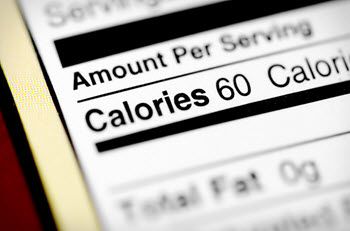Before You Eat It, Do You Know the RACC?
Posted on 27th Apr 2018

If you check the label on virtually any food item, you’re going to see the RACC at the very top. RACC is an acronym developed by the Food and Drug Administration (FDA), and it stands for Reference Amount Customarily Consumed.
Usually, on the food label it is listed as “servings per container.”
But how do they determine the servings per container? If you think it is determined using a mega-computer somewhere or by a complicated scientific formula, you’re in for a bit of a disappointment.
The FDA actually puts a food item — like a bag of cookies or a pint of ice cream — in front of a lot of randomly selected people and watches how much they consume. They then take those measurements and use them to determine servings per container.
You might also note that much of the information on food labels today is listed in “grams,” which can be confusing. Many people know grams are a measurement of weight, but they may not know just how much a gram weighs.
Nevertheless, serving sizes may still be listed in grams. Because of the confusion this can cause, the FDA is working to make this section of the label easier to understand. Although the serving size may be given in grams, more often the information will look something like this:
- Servings Per Container About 8
- Serving Size 1 Slice
- Serving Size 1 Cup; Servings Per Container 2
Let’s see the process in action:
- A package containing 10 cookies – which are referred to as “pieces” using FDA lingo – is placed in front of 100 people.
- The entire package has 400 grams.
- This means each cookie is 40 grams (400 ÷ 10 = 40).
- Each person consumes on average two cookies per package, totaling 80 grams.
- This means the serving size for this package of cookies is two pieces, and the label should read: Serving Size Per Package 2 Cookies. It may also state “80 grams.”
Easy, right? Well, not so fast.
The FDA also has reference tables on scores of food items, including cookies. According to their reference table, one serving or one cookie weighs in at 30 grams. Because of this, the FDA ignores – at least in this example – exactly how many cookies were eaten on average in this test and selects the reference amount closest to their own figures.
Because 40 grams (one cookie) is closer to 30 grams, the label on this package of cookies will likely read: Serving Size Per Package 1 Cookie.
We should note that these FDA reference tables are not written in stone. People are eating more today than they were in the 1970s and 1980s. The FDA is well aware of this and is slowly adjusting its reference tables accordingly.
Related to this, FDA analysts also know that consumer behavior has changed. At one time, someone might have purchased a bottle of soda and shared it with someone else. As a result, the FDA would say that bottle contains two servings.
But today, when most people purchase a bottle of soda, they intend to consume the entire bottle, not realizing they just consumed two servings. So, if they are counting calories and see the label indicates the product contains 180 calories per serving, they might not grasp that they just consumed 360 calories.
The key takeaway of all this is that food labels can be confusing and they simply may not reflect how people eat today.
It is because of this that food retailers and processors must have access to systems that can accurately determine precisely how many nutrients are in a recipe and food items. This is the best way to ensure their food product information and labels are accurate.
For more information on menu management systems and recipe programs to promote health, contact a DayMark Safety Systems representative .


